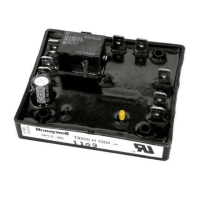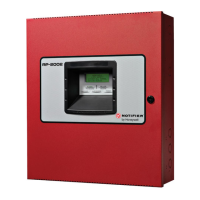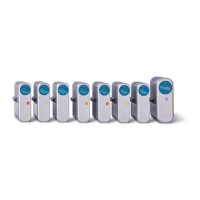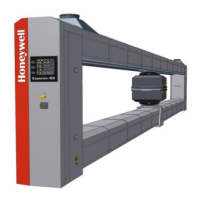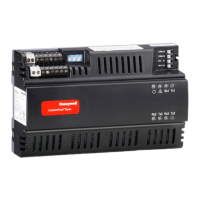SPZ--8000 Digital Integrated Flight Control System
A28--1146--055
REV 2
System Limits
7-6
VOR Over Station Sensor (VOR OSS)
The OSS detects the erratic radio signals encountered in the area above
the VOR transmitter . When these radio signals reach a certain level of
deviation, they no longer are useful and the OSS eliminates them from the
control signal. The VOR OSS trips when the following conditions are
satisfied :
D VOR track or VOR arm has occurred plus 3 seconds of elapsed time
D Either of the following occurs:
— Distance to the station is less than 1/4 of the barometric altitude
and DME valid
— Distance to the station is less than 1/4 of radio altitude, DME
valid, and VOR APP
— Lateral deviation is greater than 1 dot and the rate of deviation
is greater than 1/9 dot per second and the DME is not valid.
VOR After Over station Sensor 1/2 (AOSS 1/2 )
When the aircraft is flying in the OSS state, beam deviation is monitored
to determine when it is again useful to include in the command signal. The
AOSS monitors beam deviation. When certain beam deviation conditions
are satisfied, the AOSS trips. There are two stages to the AOSS, AOSS
1, and AOSS 2. AOSS 2 does not trip until AOSS 1 has tripped. These
sensors ensure that when beam deviation is included in the control signal,
it is usable information.
D VOR AOSS 1 occurs when all the following conditions are satisfied:
— VOR OSS has occurred dependent upon the active lateral mode
— A calculated period of time has elapsed since the last TO/FROM
transition on the HSI in order for AOSS 1 to trip. The period of time
elapsed is calculated using ground speed and altitude. The higher
the altitude, the longer it takes to get through the cone of erratic
radio information, and the longer the time period required to trip
AOSS 1. Likewise, the lower the aircraft altitude, the smaller the
cone of erratic radio information, and the shorter the time period
required to trip AOSS 1. The required elapsed time period is also
affected by the aircraft’s ground speed. The faster the ground
speed, the quicker the aircraft travels through the cone. The slower
the ground speed, the longer it takes to pass through the cone, and
the longer the time period required to trip AOSS 1.

